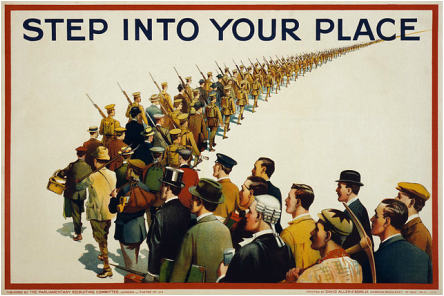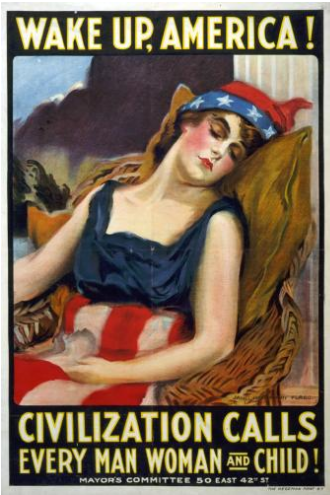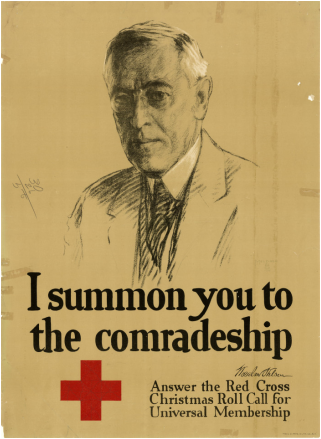There many types of propaganda during World War I trying to convince people to join the war effort by either buying war bonds or joining the fight. Some of the types of propaganda include bandwagon, testimonial, and emotional appeal.

Another method that was used was the testimonial method where someone famous or expert in a specific topic would talk about their opinion. People listen to what famous people have to say, like President Woodrow Wilson, and so they would want to follow what he or she has to say. For example, Wilson very highly supported the Red Cross so an example of a testimonial method poster would be:
The last method that was used during WWI was the emotional appeal method where posters would make people feel empathy or arise feelings inside of people to convince them to join the war. Many times it was just a poster calling people to action. An example of an emotional appeal poster would look like this:


2 comments:
It is amusing how these same advertising techniques are still used today, just in different contexts. In commercials and ads, strategies such as appealing to emotion or empathy, or appealing to strong authority or influential people are still used to get viewers to buy their products. The advertising industry really hasn't changed much.
Your integration of actual posters is a great supplement to your descriptions. Also, I think that this post is crucial in understanding the widespread feeling of urgency to join the war in American society. These types of propaganda, as well as jail, public violence, and familial threats were successful in recruiting 4 million soldiers. This number also includes the amount of soldiers drafted by the government. However, it is still significant relative to the American population of 100 million at the time. Today the population is over 325 million.
Post a Comment